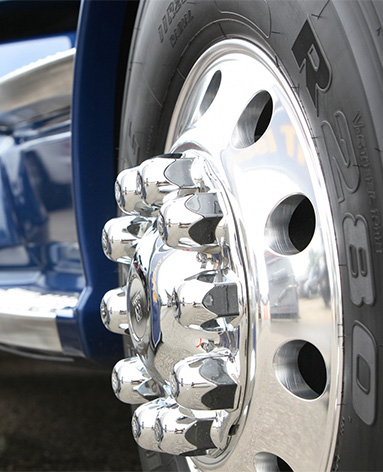12 月 . 03, 2024 16:27 Back to list
Can Brake Drums Be Repaired or Resurfaced for Better Performance and Longevity?
Can Brake Drums Be Resurfaced?
Brake drums are critical components in the braking system of many vehicles, particularly those with drum brakes. Over time, these drums can become worn or damaged due to friction from brake shoes, which can lead to decreased braking efficiency, increased stopping distances, or even brake failure. One common question among automotive enthusiasts and drivers alike is whether brake drums can be resurfaced, and if so, how is this process performed.
Understanding Brake Drum Wear
Brake drums are subjected to extreme conditions each time a vehicle is braked. The heat generated from friction can cause the metal of the drums to expand and warp, while continuous wear can result in grooves and pitting on the surface. The performance of the braking system is directly affected by the condition of the brake drums. If the surface is no longer smooth, the brake shoes will not make effective contact, leading to reduced braking power and potential safety hazards.
Resurfacing Brake Drums Is It Possible?
Yes, brake drums can generally be resurfaced if they have not worn beyond their minimum thickness. Resurfacing involves machining the inner surface of the drum to remove imperfections, providing a smooth and uniform surface for the brake shoes to contact. This process can restore the proper functionality of the braking system without the need for complete drum replacement, which can be a costlier and more time-consuming option.
When to Resurface
Before deciding to resurface brake drums, it is vital to measure their diameter and thickness. Each drum has a manufacturer-specified maximum diameter. If the current diameter exceeds this limit after resurfacing, the drums must be replaced. Signs that indicate whether resurfacing is needed include excessive vibration during braking, noises such as grinding or squealing, and the presence of deep grooves or hot spots on the drum's surface.
The Resurfacing Process
The resurfacing process usually involves the following steps
1. Inspection The technician inspects the brake drums for visible wear or damage. Measurements are taken to determine whether the drums can be safely resurfaced.
can brake drums be resurfaced

2. Removal The drums are removed from the vehicle. This process may require removing the wheel and disassembling other brake components.
3. Machining Once removed, the brake drums are taken to a specialized machine that grinds or cuts the surface. This process must be performed with precision to ensure that the drums are perfectly circular and within tolerance limits.
4. Cleaning After machining, the drums are cleaned to remove any debris or metal shavings that may interfere with the brake system's operation.
5. Reinstallation The resurfaced brake drums are then installed back onto the vehicle, and any disassembled components are reassembled.
6. Testing Finally, the braking system is tested to ensure everything is working correctly and efficiently.
Pros and Cons of Resurfacing
There are several benefits to resurfacing brake drums. It can be a cost-effective solution compared to buying new ones and can extend the life of the braking system, allowing for better performance and safety.
However, there are some potential downsides. If the drums are too worn or if machining is not done correctly, resurfacing might not resolve underlying issues. Additionally, resurfacing can reduce the life expectancy of the drums since they become thinner after the process.
Conclusion
In conclusion, resurfacing brake drums can be a viable option to restore braking performance, provided the drums are still within acceptable thickness limits. Regular inspection and maintenance of the braking system are essential for vehicle safety, and drivers should be proactive in addressing signs of wear. By understanding the resurfacing process and knowing when it is appropriate, drivers can make informed decisions, ensuring their vehicle remains safe and functional on the road.
-
Brake Drum for Kamaz Trucks Durable OEM Replacement & High Performance
NewsMay.30,2025
-
Brake Drum Man High-Quality Drum Brake & Shoe Solutions
NewsMay.30,2025
-
High-Performance Brake Drum for Kamaz Trucks Durable Drum Brake Components
NewsMay.29,2025
-
Brake Drum Man High-Quality Drum Brake Drums & Brake Shoes
NewsMay.29,2025
-
Brake Drum MAZ High-Performance & Durable Replacement Parts
NewsMay.29,2025
-
heavy truck brake drums
NewsMar.07,2025
